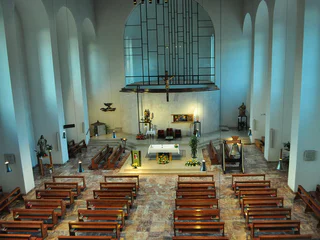
1/2
Parish church to the sacred apostle Jakobus
San Giacomo/St. Jakob - Laives/Leifers, Laives/Leifers, Bolzano/Bozen and environs
| Bolzano a jeho okolí vám nabízejí bohatou historii a kulturní zážitky. Přijďte a objevte všechno, co tento region nabízí. |

1/2
San Giacomo/St. Jakob - Laives/Leifers, Laives/Leifers, Bolzano/Bozen and environs

1/6
Don Bosco/Don Bosco, Bolzano/Bozen, Bolzano/Bozen and environs

Auna di Sotto/Unterinn, Ritten/Renon, Bolzano/Bozen and environs

Pietrarossa/Rotwand, Ritten/Renon, Bolzano/Bozen and environs

Nobls/Nobls, Jenesien/San Genesio Atesino, Bolzano/Bozen and environs

S. Genesio Atesino/Jenesien, Jenesien/San Genesio Atesino, Bolzano/Bozen and environs

1/2
Vadena/Pfatten, Bolzano/Bozen and environs

1/2
Pietrarossa/Rotwand, Ritten/Renon, Bolzano/Bozen and environs

1/3
Oltrisarco/Oberau, Bolzano/Bozen, Bolzano/Bozen and environs

Pietrarossa/Rotwand, Ritten/Renon, Bolzano/Bozen and environs

1/5
Salonetto/Schlaneid, Mölten/Meltina, Bolzano/Bozen and environs

Bolzano Centro/Bozen Zentrum, Bolzano/Bozen, Bolzano/Bozen and environs

Bolzano Centro/Bozen Zentrum, Bolzano/Bozen, Bolzano/Bozen and environs

Bolzano Centro/Bozen Zentrum, Bolzano/Bozen, Bolzano/Bozen and environs

1/3
Pietrarossa/Rotwand, Ritten/Renon, Bolzano/Bozen and environs

1/2
Vadena/Pfatten, Bolzano/Bozen and environs

1/6
Soprabolzano/Oberbozen, Ritten/Renon, Bolzano/Bozen and environs

1/2
Bronzolo/Branzoll, Bolzano/Bozen and environs

Gries/Gries, Bolzano/Bozen, Bolzano/Bozen and environs

1/5
Bolzano Centro/Bozen Zentrum, Bolzano/Bozen, Bolzano/Bozen and environs

1/2
Cologna/Glaning, Jenesien/San Genesio Atesino, Bolzano/Bozen and environs

1/2
Pietrarossa/Rotwand, Ritten/Renon, Bolzano/Bozen and environs

Meltina/Mölten, Mölten/Meltina, Bolzano/Bozen and environs

Gries/Gries, Bolzano/Bozen, Bolzano/Bozen and environs

Bolzano Centro/Bozen Zentrum, Bolzano/Bozen, Bolzano/Bozen and environs

Verschneid/Frassineto, Mölten/Meltina, Bolzano/Bozen and environs

1/5
Afing/Avigna, Jenesien/San Genesio Atesino, Bolzano/Bozen and environs

Nobls/Nobls, Jenesien/San Genesio Atesino, Bolzano/Bozen and environs

1/2
Pineta di Laives/Steinmannwald, Laives/Leifers, Bolzano/Bozen and environs

S. Osvaldo/St. Oswald - Castelrotto/Kastelruth, Kastelruth/Castelrotto, Bolzano/Bozen and environs